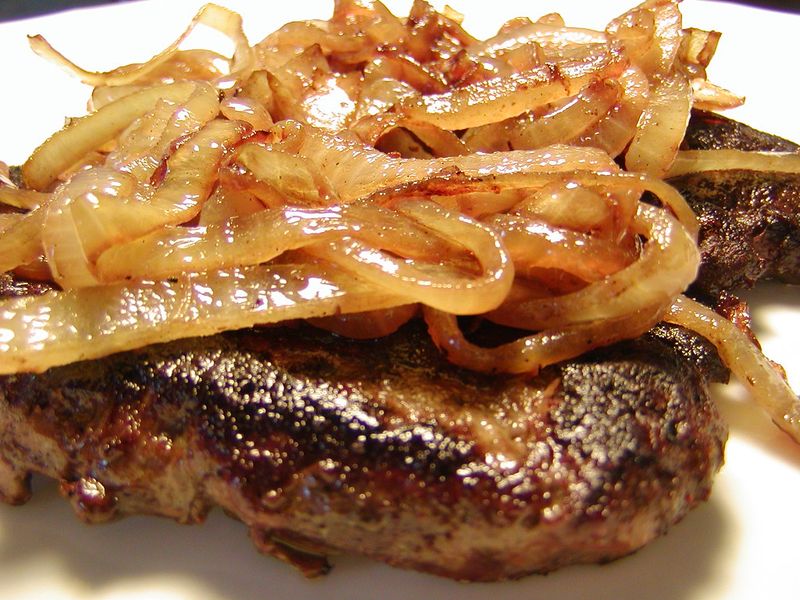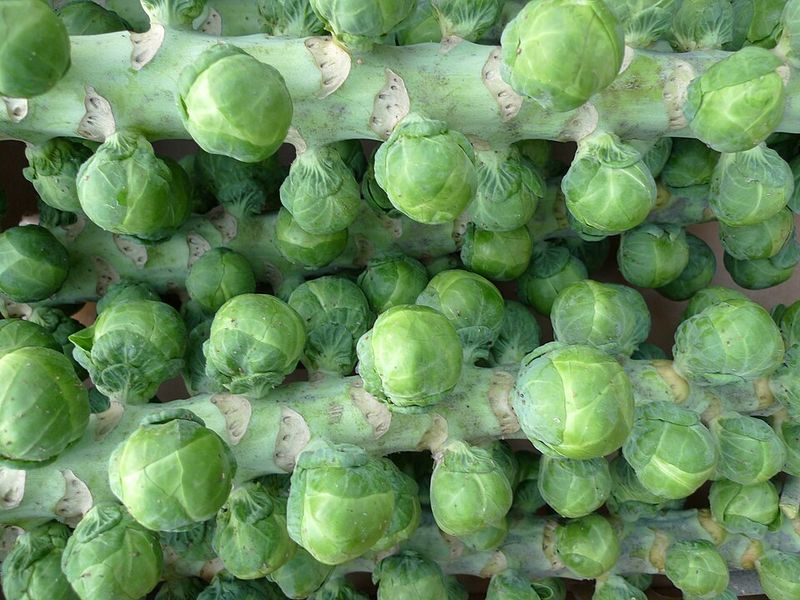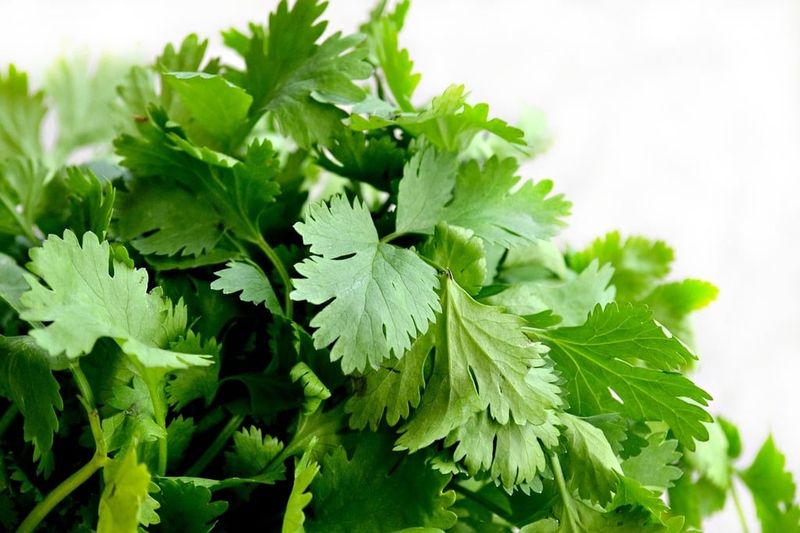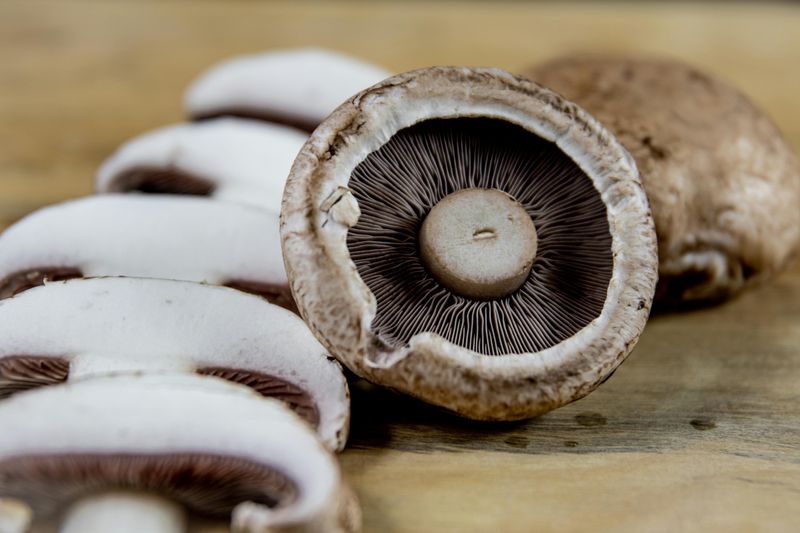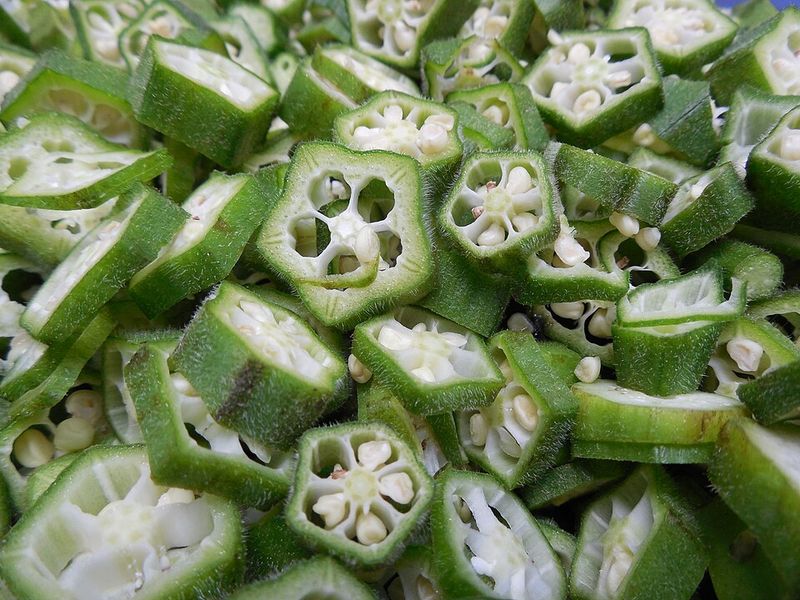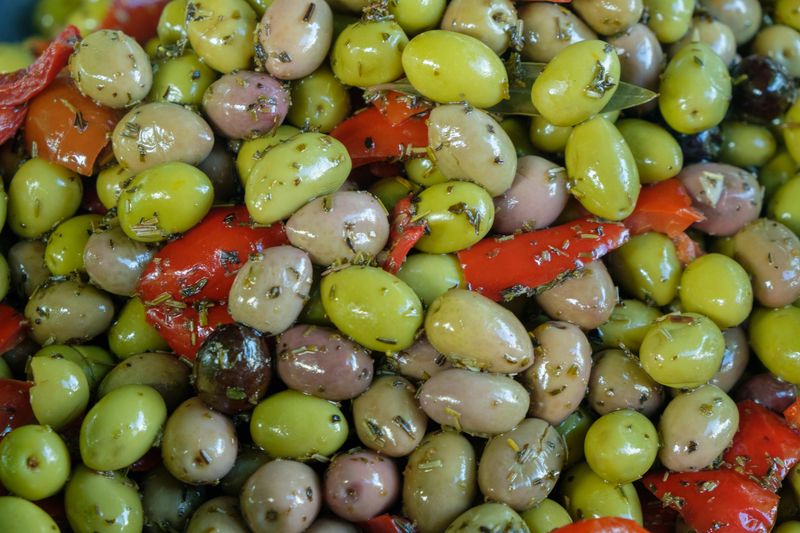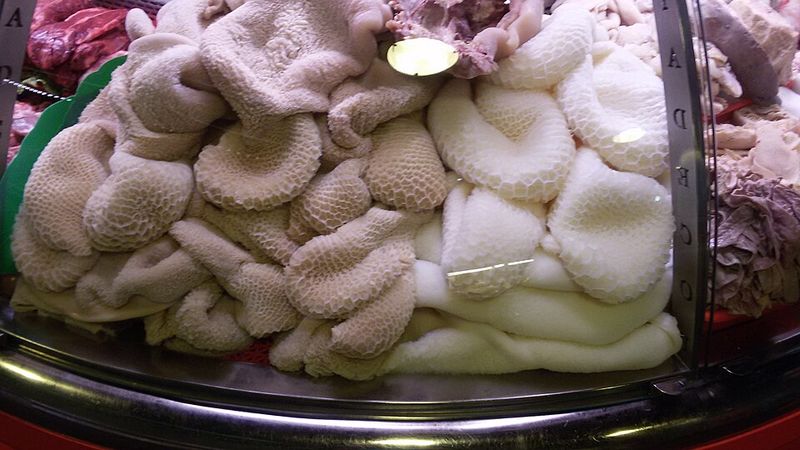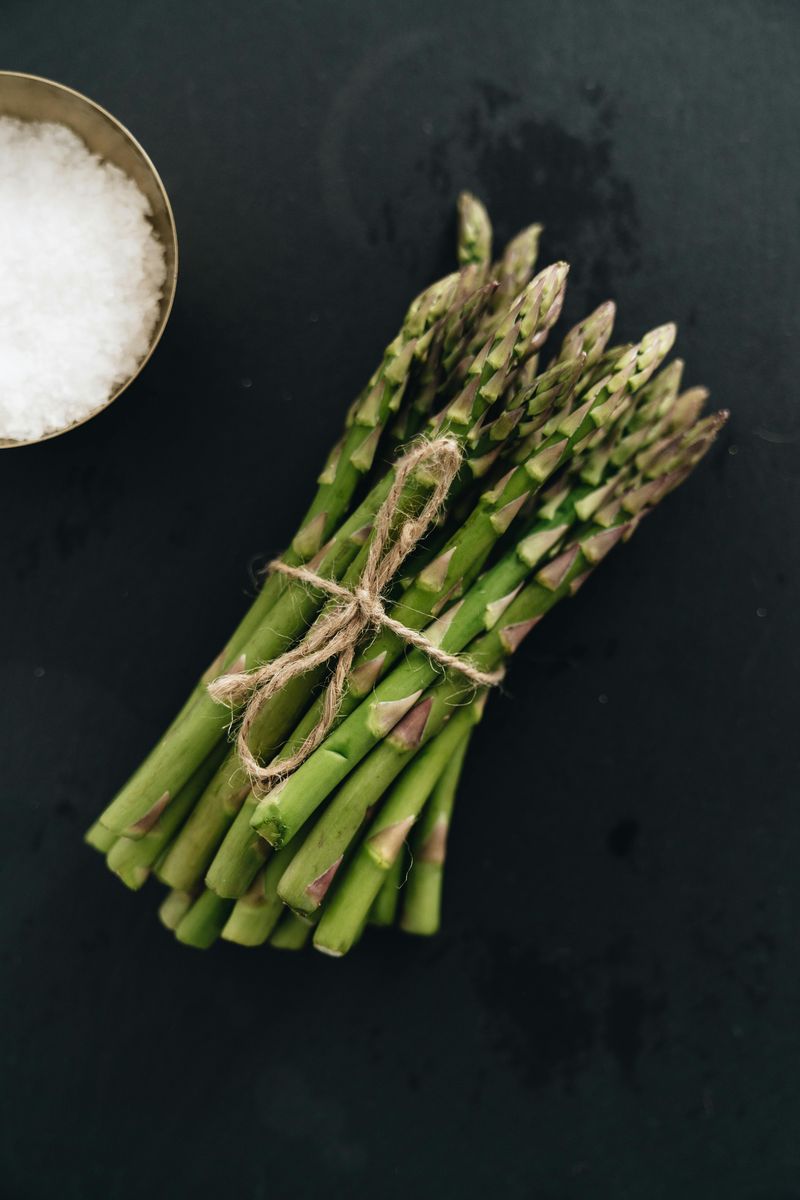Some foods make people scrunch up their faces in disgust, yet they keep appearing on dinner plates around the world. From slimy textures to funky smells, these controversial ingredients have sparked countless dinner table debates. But here’s the twist: despite all the hate, we can’t seem to stop eating them, and there are surprisingly good reasons why they’ve stuck around for so long.
1. Liver
Many people dislike liver for its metallic taste and mushy texture. It’s also often associated with unpleasant childhood meals.
Yet, it’s one of the most nutrient-dense foods, packed with iron, vitamin A, and B12. Traditional diets around the world have included it for centuries.
Grandmothers everywhere insist on serving it because they know its health benefits are too good to ignore. When cooked properly with onions and spices, liver can actually taste quite rich and savory, transforming from dreaded dinner to comfort food.
2. Brussels Sprouts
Once the ultimate kids hate it vegetable, Brussels sprouts taste bitter when boiled to death. Overcooked versions release sulfur compounds that smell terrible and taste worse.
But when roasted or sautéed, they caramelize beautifully, turning sweet and nutty. Modern cooking methods have completely changed their reputation.
Restaurants now serve them with bacon, balsamic glaze, or parmesan, making them trendy menu items. That’s why they’ve made a modern comeback and even kids are starting to request them for dinner.
3. Anchovies
These tiny fish pack a punch of salt and fishiness that many find overwhelming. Their strong flavor can dominate any dish they touch.
But chefs love them for the deep umami flavor they bring to sauces and dressings. Think Caesar salad or pasta puttanesca, where they melt into the background.
Professional cooks know that anchovies don’t make food taste fishy when used correctly. Instead, they add a mysterious depth that makes people ask, what’s in this delicious sauce? The secret ingredient often stays hidden.
4. Blue Cheese
Its pungent smell and moldy veins scare people off at first glance. The aroma alone can clear a room if you’re not used to it.
But its rich, tangy flavor is prized by cheese lovers and gourmet cooks everywhere. It’s one of those acquired tastes that divides people completely.
Some folks can’t get enough of it crumbled over salads or melted into creamy dressings. Others won’t go near it, insisting it smells like dirty socks. There’s rarely any middle ground with this polarizing dairy product.
5. Cilantro (Coriander Leaf)
A genetic quirk makes cilantro taste like soap to some people. Scientists have identified the specific genes responsible for this soapy sensation.
Despite this, it’s a cornerstone of countless cuisines around the globe. Mexican, Indian, and Thai cooking all rely heavily on its bright, citrusy notes.
For those who can enjoy it, cilantro brings incredible freshness to dishes like salsa, curry, and pho. The unlucky soap-tasters often have to pick it out carefully or request dishes without it, missing out on flavor.
6. Mushrooms
Earthy, sometimes slimy, mushrooms are often texture offenders for picky eaters. Their spongy consistency can feel strange in the mouth.
Still, they’re adored for their umami richness and versatility in everything from risottos to burgers. Vegetarians especially appreciate them as a meaty substitute.
Mushrooms absorb flavors beautifully and add depth to soups, sauces, and stir-fries. When sautéed until golden, they lose that slimy quality and become wonderfully savory. Many mushroom haters eventually convert after trying them cooked properly with garlic and butter.
7. Okra
Its slimy texture turns many people off immediately. When cooked, okra releases a gooey substance that can coat your mouth unpleasantly.
But that very quality makes it useful for thickening soups and stews like gumbo. Southern cooks have relied on it for generations.
Fried or roasted at high heat, okra loses the slime and wins fans back with its crispy exterior. Pickled okra is another popular preparation that avoids the texture problem entirely. The vegetable is also packed with vitamins and fiber.
8. Olives
Some can’t get past the bitterness and briny intensity of olives. First-time tasters often spit them out in surprise.
Yet, they’re fundamental to Mediterranean cuisine and celebrated for their heart-healthy fats. Greek and Italian cooking wouldn’t be the same without them.
Olives come in dozens of varieties, from mild to intensely flavored, marinated with herbs and garlic. Many people who hated them as kids grow to love them as adults. They’re perfect on pizzas, in salads, or simply enjoyed with cheese.
9. Black Licorice
The strong anise flavor tastes medicinal to many Americans. It reminds some people of cough syrup or old-fashioned pharmacy smells.
But in parts of Europe, especially the Nordic countries, it’s a nostalgic treat. They even make salty versions called salted licorice.
Finnish and Dutch candies often feature black licorice in varieties that would shock American taste buds. The flavor is either absolutely delicious or completely revolting depending on who you ask. There’s scientific evidence that licorice preferences may be partly genetic and partly cultural.
10. Durian
This Southeast Asian fruit is infamous for its strong odor, described as everything from rotten onions to sewage. Some hotels and public transportation ban it entirely.
But its fans insist the creamy flesh tastes heavenly, combining flavors of custard, almond, and caramel. It’s revered where it grows.
In countries like Thailand and Malaysia, durian is called the king of fruits and commands high prices. People either become devoted fans or swear they’ll never try it again. The smell-to-taste disconnect confuses many first-timers.
11. Tofu
To meat eaters, tofu can seem bland and mushy without much appeal. Its plain appearance doesn’t help its case either.
However, it’s a plant-based protein powerhouse that soaks up flavor like a sponge. This makes it essential in vegetarian and vegan diets worldwide.
Properly prepared tofu can be crispy, savory, and absolutely delicious when marinated and cooked right. Asian cuisines have perfected countless ways to make it shine. Many tofu haters simply haven’t tried it prepared well, having only experienced the sad, unseasoned versions.
12. Eggplant (Aubergine)
Eggplant’s texture can be spongy or mushy when cooked poorly. Undercooked, it’s bitter and unpleasant to chew.
But when grilled, roasted, or used in dishes like baba ganoush, it’s silky and flavorful. Mediterranean and Middle Eastern cooks know exactly how to handle it.
The key is salting it first to remove bitterness and excess moisture. Properly cooked eggplant melts in your mouth and absorbs seasonings beautifully. Eggplant parmesan and moussaka are beloved comfort foods that showcase this misunderstood vegetable at its absolute best.
13. Celery
Critics call it watery, stringy, and bland with barely any flavor. It’s often dismissed as crunchy water.
Still, it’s a low-calorie snack, a soup base essential, and adds crunch where needed. French cooking starts many dishes with celery in the mirepoix.
Celery with peanut butter is a classic healthy snack that kids actually enjoy. It also adds freshness to tuna salad and chicken salad. While it may not be exciting on its own, celery plays an important supporting role in countless recipes around the world.
14. Oysters
Many people can’t handle the slimy texture of raw oysters sliding down their throat. The experience feels too much like swallowing something alive.
Others consider them a delicacy worth paying premium prices for. Briny, fresh, and luxurious, especially with lemon or mignonette sauce.
Oyster bars are popular in coastal cities where people slurp them down by the dozen. They’re also considered an aphrodisiac in many cultures. The texture is definitely an acquired taste that separates adventurous eaters from the squeamish.
15. Sardines
Strong-tasting and oily, sardines can be polarizing for people used to mild fish. The smell from an opened can can be quite intense.
But they’re a nutritional gem, full of omega-3s, calcium, and protein. They feature prominently in Mediterranean diets.
Sardines are also sustainable and affordable, making them an environmentally friendly seafood choice. Portuguese cuisine celebrates them in dozens of preparations. Many people who grew up eating them feel nostalgic, while newcomers often need time to adjust to their bold, fishy flavor.
16. Marmite (or Vegemite)
This thick, dark yeast spread is notoriously divisive with its own marketing slogan. You either love it or hate it, the company admits.
Its powerful salty, umami flavor is overwhelming to some but beloved in the UK and Australia. A little goes a long way.
Spread thinly on buttered toast, it’s a breakfast staple for millions of people. Newcomers often make the mistake of slathering it on thick like peanut butter. The intense, almost beer-like flavor comes from concentrated yeast extract packed with B vitamins.
17. Black Pudding (Blood Sausage)
The thought of eating animal blood is enough to turn many people away instantly. The concept alone makes squeamish eaters uncomfortable.
Yet, it’s traditional in many cultures and valued for its rich, savory flavor. Nose-to-tail sustainability means using every part of the animal.
Black pudding appears in full English and Irish breakfasts alongside eggs and bacon. When fried until crispy, it has a wonderful texture and deep, mineral-rich taste. Many cultures have their own versions, from Spanish morcilla to French boudin noir.
18. Tripe
As the edible lining of a cow’s stomach, tripe’s chewy texture and strong odor are major turn-offs. It requires extensive cleaning and preparation.
Still, it’s comfort food in many cultures and absorbs sauces beautifully. Mexican menudo and Italian trippa are beloved traditional dishes.
When cooked low and slow in flavorful broths, tripe becomes tender and satisfying. Vietnamese pho often includes tripe as one of the meat options. It’s an economical ingredient that stretches food budgets while providing protein and unique texture.
19. Beets
Some say they taste like dirt, and there’s actually a scientific reason for that. Beets contain geosmin, the same compound found in soil.
That earthy flavor divides people sharply into lovers and haters. Beets are highly nutritious though, full of folate and antioxidants.
They’re popular in health-conscious dishes like salads and smoothies. Roasting beets brings out their natural sweetness and reduces the earthy taste. Pickled beets are a traditional side dish, and beet juice is a trendy sports drink for improving athletic performance.
20. Asparagus
Its woody stems and sometimes bitter aftertaste make it unpopular for some people. Overcooked asparagus becomes mushy and unappetizing.
But when cooked properly, asparagus turns tender and sweet. It’s a classic sign of spring on the table.
Grilled or roasted with olive oil and garlic, asparagus develops wonderful flavor. The vegetable is also packed with vitamins and fiber. Fun fact: asparagus makes your pee smell funny because of sulfur compounds, and only certain people can actually smell it due to genetics.

